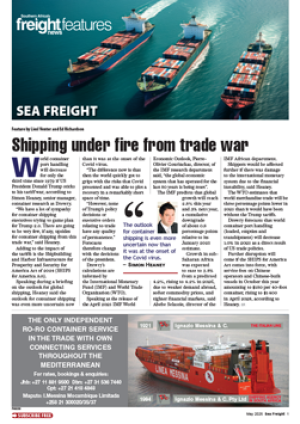IT TAKES a major road accident to prove the safety value of any form of container as M&S Shipping found recently when a tank was involved in a trucking collision in Dar es Salaam.
The tank was loaded with flammable material, classified as IMCO 3 cargo. The tank was badly damaged and is a total loss, but not one drop of cargo was spilt, says M&S managing director Malcolm Drysdale.
The impact damage to this tank suggests that any other form of liquid packaging would not have survived without major loss of cargo and risk to both environment and to those involved in the accident and recovery.
So the tank container not only affords much improved capacity lift when compared to the traditional 80x45 gallon drums in a 6m dry cargo container but also affords greatly enhanced protection and safety, not just to the cargo but to all those involved in the voyage from load to tip.
There is also the consideration, he says, that the cargo is loaded and discharged under safe and controlled conditions, from bulk facility to bulk facility, with no exposed handling.
As tank container operators the majority of the cargo we handle is of a hazardous nature and hence we invest quite heavily not only in the training of staff but also in our associates and agents around the world and in the equipment we use, he says.
All the tanks in our current fleet are IMO 1. Between voyages all tanks are not only cleaned but every valve, fitting and gasket is tested. Every product carried is researched in terms of compatibility with the stainless steel and the gaskets and 'O' rings, cleaning procedures are documented and the products carried are recorded to ensure compatibility with next loads.
Special tanks enhance export opportunities
M&S SHIPPING has, during the past 18 months, been involved in what it terms 'problem cargoes'. These are cargoes aggressive to stainless steel or which have a very high specific gravity.
They require small capacity tanks, says Drysdale. These and other problem cargoes have seen us develop special adaption to our tanks to comply with IMDG Code regulations.
We have gone the route of building and converting to the extent that we now have approximately 15% of our current fleet dedicated to the support of these cargoes. This, in turn, creates or enhances export opportunities that were previously impractical or impossible.
Copyright Now Media (Pty) Ltd
No article may be reproduced without the written permission of the editor
To respond to this article send your email to joyo@nowmedia.co.za
